Think about the last time you were about to buy the latest and greatest TV, stereo system or gaming console. You probably watched countless hours of YouTube reviews, learned about the differences between OLED and QLED, and finally figured out the color coding for AMD, Intel and Nvidia.
These high-tech products cost hundreds if not thousands of dollars. When you connect them together, you expect everything to work flawlessly. Unfortunately, somehow you are not getting the frames-per-second as promised or interruptions and glitches happen frequently during games and movies. You call customer service to express your anger and frustration, and start Googling again to understand why your new purchase isn’t performing as expected.
The consumer gap
Throughout this process, you probably never thought that the cables connecting these state-of-art devices might be the culprit. But how would you know? Consumers often become victims in the ever-increasingly confusing tech world because they are asked to be the “experts” who can put high-performance systems together.
We’ll let you in on a secret: industry and enterprise systems, for example modern data centers, optimize the overall performance by pairing powerful servers with high-end cables. The cables are equally as important as the servers themselves. This is how Google can provide search results in a fast and reliable way.
There exists a gap for average consumers: connectivity is considered “low tech” that is often treated as an afterthought, but when cables do become the bottleneck, it is almost impossible to navigate through the swamp of cable options on Amazon to find a better solution. How should an average consumer (or even professionals in the commercial space) distinguish various products and gauge their capabilities? In this post, we will explain how and why vertical integration is the key to making high-performance cables.
Vertical integration
Optical driver and receiver ICs are at the heart of active optical cables. There are other ICs providing power management and optical-electrical conversions (i.e. laser and photo diodes). These ICs are put onto a custom PCB to create connector modules, which are then assembled into a cable with fiber channels in between. The finished cables will then be subject to exhaustive testing to ensure functionality and performance.
Most cables on the market rely on multiple vendors for each step of the process. Such an approach often leads to sub-par quality or sub-optimal performance because there is limited visibility into each vendor’s procedure, and often each step introduces overhead and misalignment.
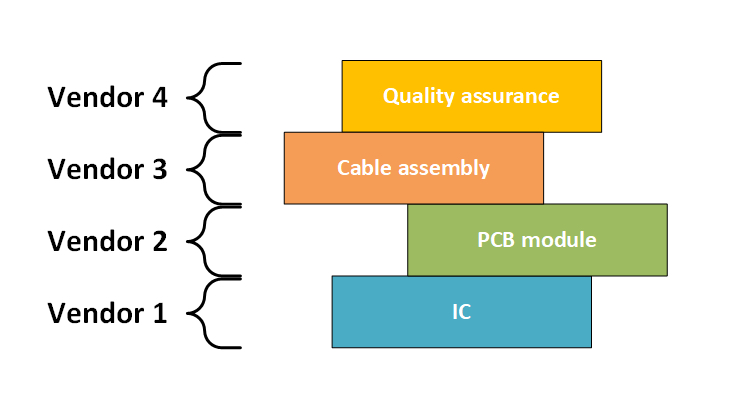
Pure Fi has the capabilities and expertise to own all the steps in the design and manufacturing flow, resulting in vertically integrated solutions for the company’s cable products. Each step is executed in alignment with the neighboring steps, leading to a stable manufacture pipeline and thus optimized cable products.
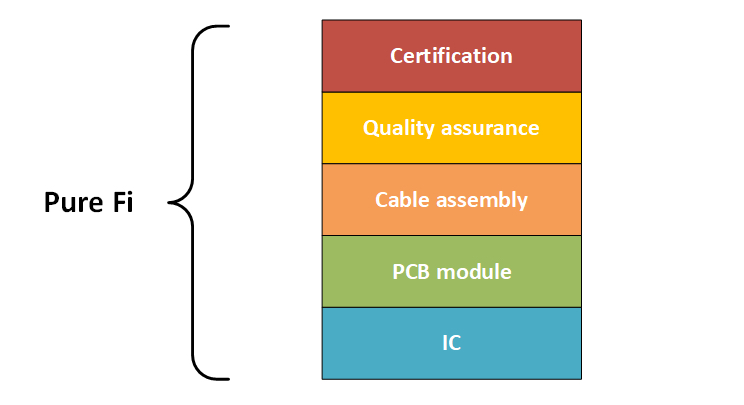
There are many technical challenges in each step of the stack. Let’s discuss in more detail about the subtleties in creating a cable that will deliver the performance you expect.
Key steps in the stack
Illustrated below is a diagram of the inner workings of an HDMI2.1 AOC. The signal travels from the source (left), through the in-house driver IC and then gets converted to light by the laser diodes. A lens and a prism focus and direct the light into the fiber channel. On the receiving end, the light is directed into photodetectors. The converted electrical signal gets amplified and conditioned by a custom receiver IC, which then drives the signal to the display.

The high-speed signal quality of the entire chain is measured by eye diagrams (a real lab experiment snapshot is shown below). A healthy eye diagram has sufficient opening both in the horizontal (time) and vertical (amplitude) directions. The driver and receiver ICs’ performance is critical in preserving signal integrity and error-free data transmission.

Knowing the exact IC specifications and behaviors also help with PCB module optimization. Below is a zoomed-in view of the driver side of the AOC. The driver IC needs to interface with other components in the module through bond wires, PCB traces and soldered pins. These copper wires, albeit short, could become bottlenecks if not tightly controlled. At the same time, power integrity also needs special care, especially in a small footprint connector module.
On the optical-electrical conversion side, using the best-in-class laser diodes and photodetectors can further maximize signal bandwidth, but just the best parts alone aren’t enough. One key challenge is the mechanical alignment and stability of the optical components. For example, a lens and 45-degree prism will collect the laser’s emitted light and send it into the fiber ribbon. Alignment accuracy will directly determine how much signal is transmitted, thus affecting the signal strength on the receiving end (where alignment is equally important). Special equipment and human supervision are both necessary for optimal alignment. The prism also needs to be securely glued onto the PCB to prevent misalignment due to movement and aging.
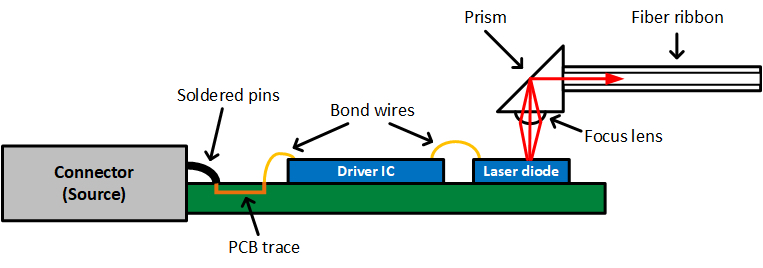
Then comes the exterior casing and materials that wrap up everything under the hood. The look and feel of a finished cable matter. A cable’s exterior equally reflects the design quality on the inside. Multiple design iterations had to happen for us to finally land on a double layer casing for the connector module for isolation and protection, and premium braided cabling materials for the right balance between flexibility and durability.
The connector’s shape and size are also consideration points for day-to-day usage, plug/unplug cycles, and clearance to neighboring connections. As an example, this is how the cables would look on a commercial 4-port HDMI switch box.
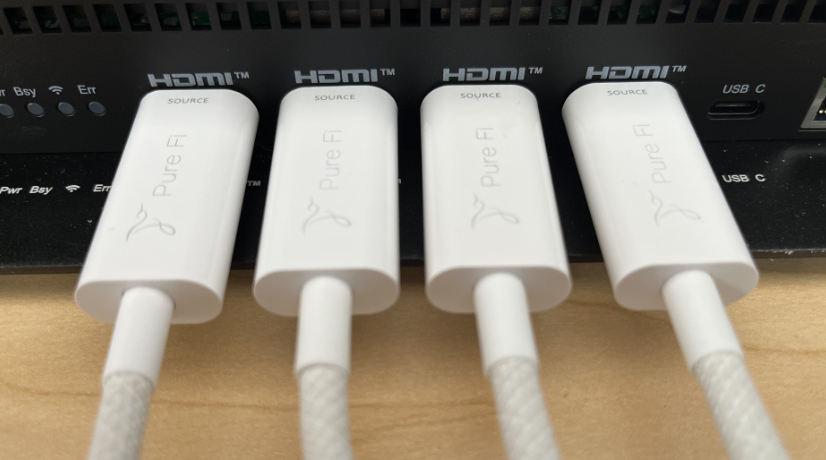
Last but not least, each cable needs to go through more rigorous testing before shipping to end-users. Even though every step of production is heavily scrutinized, final testing ensures compatibility and performance. In the case of our HDMI cables, we worked with the HDMI License Administrator to ensure the cables comply with HDMI 2.1, the latest and most state-of-the-art HDMI specification. Once all this is said and done, our cables are ready for the market. And the end result speaks for itself, with a growing army of happy customers and a number of industry awards under our belt that further validate our vertically oriented approach.
Bridging the gap with innovation
If you are surprised by the many technical aspects of making a good cable, you are not alone. Most cable manufacturers are not transparent enough because they don’t own all the critical layers in the vertical stack. We leverage our vertical capabilities for continuous innovation. The feedback loops in this approach are much shorter, thus we constantly gather data and find new ways to create better connectivity solutions.
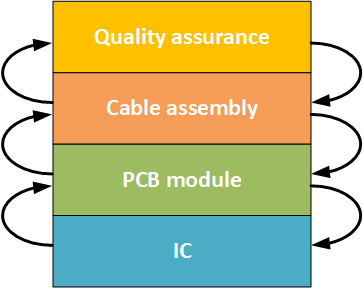
Pure Fi takes pride in bridging the gap for consumers with our vertical approach and innovations. In the new age of digital entertainment, everyone should have access to high-end, enterprise-grade connectivity products. There will be more exciting products to come as we continue to bring premium connectivity solutions to market so our customers can spend less time questioning their purchases, and more time enjoying uncompromising home entertainment experiences.
